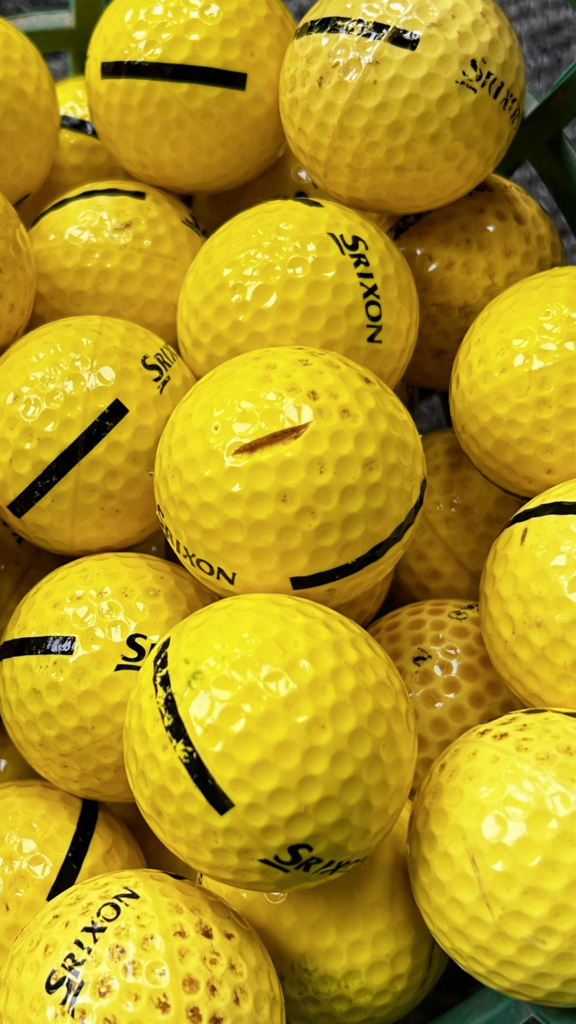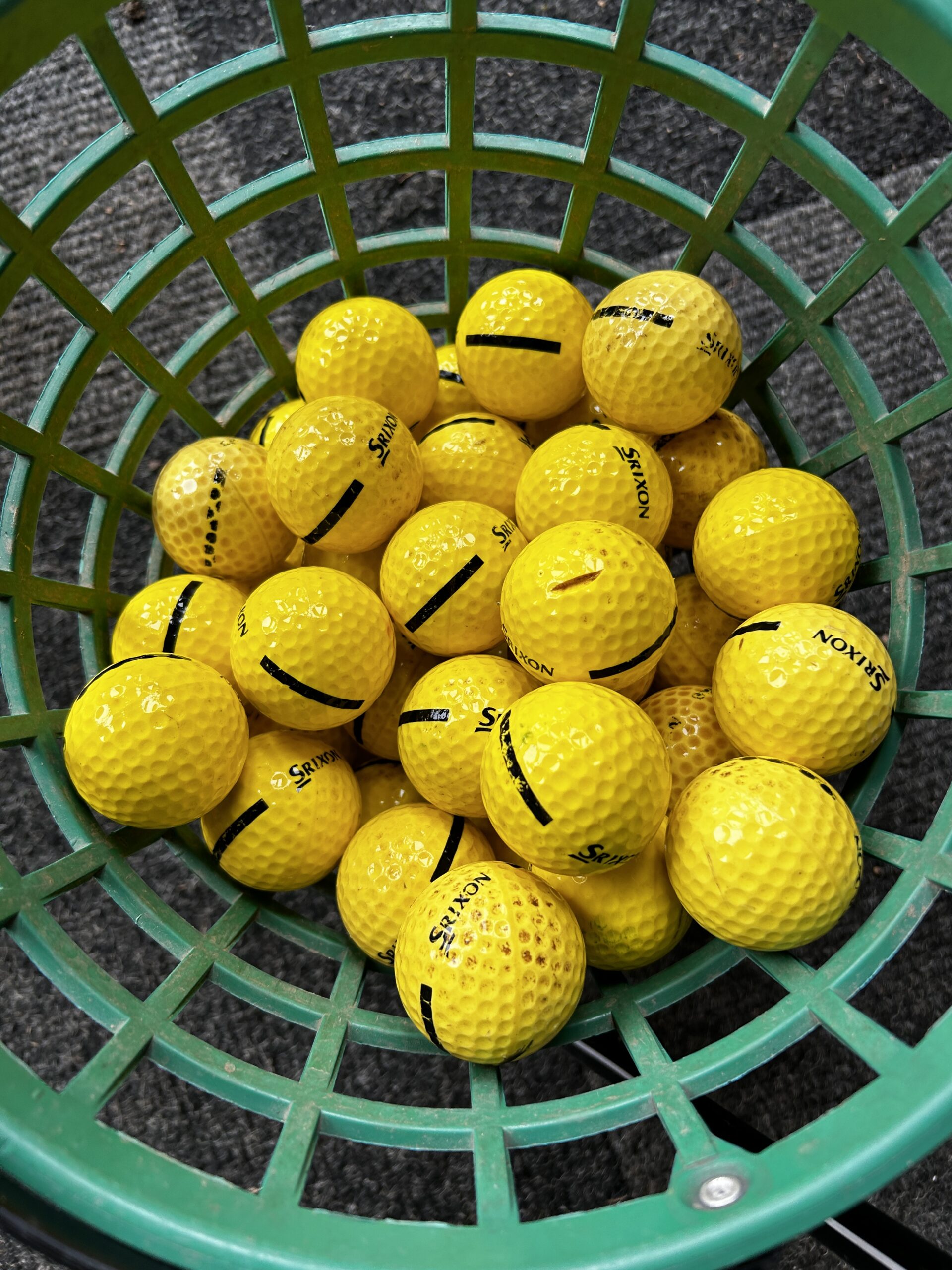You’ve paid for your bucket of balls at the range, the one that seems to become less full each time the machine fulls it up but nevermind, inflation is a thing that has even found its way even to our bucket of golf balls.
Anyway, you get your bucket of balls, pour them out at your tee box and aren’t very impressed by the condition they’re in. You tee one up and have a swing. On impact you feel the shockwave travel through your hand and the ball doesn’t go very far. “I didn’t get hold of that one” you tell yourself. Hang on, not so fast. Don’t be so hard on yourself. Yes, you’re probably right although, it’s likely not entirely your fault. What about the golf ball. Just how far do older range balls impact your distance?
Factors At Play
The impact range balls have on your distance varies depending on their quality and age. In many instances, the quality of the range balls can be quite poor. Many driving ranges seldomly replace their collection of range balls leaving us golfers to suffer. All jokes aside, it is important to remember to take into account the quality of the balls you practise with. This is particularly true if you are recording your distances for each club and trying to practise methodically.
In some cases, range balls have been recorded to achieve less that 50 yards when compared to new modern golf balls. You can imagine that a 50 yard differential on your irons could result in an extra shot here and there when you find yourself on the course. The disparity in the distance is a result of both the age and quality of the golf ball. These factors affect both the exterior and the interior of the golf ball.
Quality and Usage
Range balls are hit countless times per day, shortening the lifespan of the golf ball. This repeated impact affects the absorption properties of the soft core within the interior of the range ball. Overtime, this makes them feel hollow on impact. Another property of the golf ball impacting the distance the ball travels is the condition of the outer casing. Any damage, chips or tears on the outer casing affecting the aerodynamics whilst travelling through the air. The slightest addition to surface area creates added resistance resulting in shorter distance travelled. The same is true for reduced surface area in the form of chips or damage.

In the above picture you can tell the quality of the range balls is not amazing. Some of the golf balls are very worn with the one in the center having noticable damage. You can be sure that golf balls like these will most definitely produce shorter distances than newer ones.
Age and Technology
When referring to the age of a golf ball, we understand it’s ‘lifespan’ may be shortened due to how often it is hit. It is also important to consider the year in which it was manufactured. A golf ball that was manufactered 20 years ago will have inferior technology than a golf ball made today. Improvements in technology aren’t significant year to year. Over a 20, 10 and even 5 year period, however, there are noticable enhancements. Depending on the budget of the driving range, the balls purchased to complete their inventory of range balls often consists of repurposed, refurbished, lake balls or a combination of the three.
Identifying Your Club Distances
You might utilise a ShotTracer, Trackman or TopTracer at your local range to identify your average distances for each club (if it has one). If so, it is recommeded you obtain your averages after hitting different golf balls. Most of us cannot afford to donate new Pro V1s to the range, however you should consider finding another nearby range or two with golf balls that differ to those at your main practise location. Alternatively, you can go to a fitting shop and hit your clubs using higher tech equipment. The facilities at fitting shops usually have more accurate equipment and appropriate golf balls for a more accurate representation of your ability.
Having an in depth understanding of your average distances per club allows you to perform better on the golf course. It is imperative to choose the right club for the distance your ball is away from the flag if you have any plans of improving. Additionally, you will be able to accurately adjust your club selection for weather conditions including wet aind windy conditions. As a wet ball and wind both affect distance, adjusting your club choice to account for this is important.
This all ties in to the quality of golf balls you practise with as when you play with a new golf ball on the course, you don’t want to find yourself misjudging your distances and using clubs that are longer than necessary because you are used to hitting range balls.
If you do not know what your distances are for each club or didn’t know doing so was a thing, you can read all about it in our introduction to golf clubs article here.

